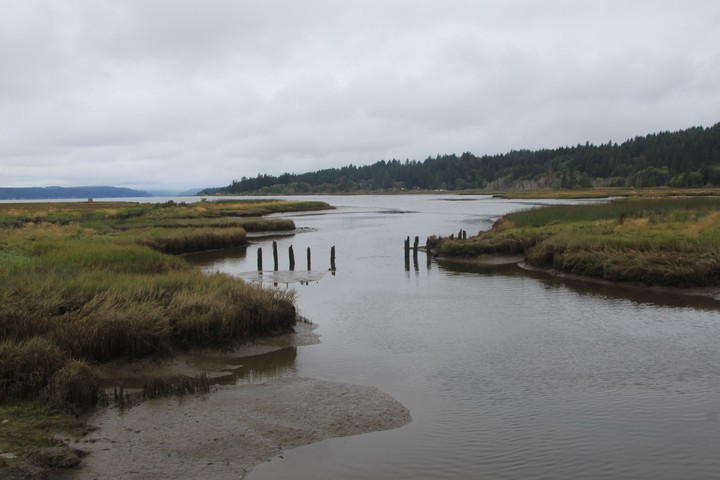Temporal variation in river nutrient and dissolved lignin phenol concentrations and the impact of storm events on nutrient loading to Hood Canal, Washington, USA

Abstract
Rapid rainfall events can be responsible for a large proportion of annual nutrient and carbon loading from a watershed. The bioavailability of organic matter during these rapid loading events increases, suggesting that storms play a relevant role in the mobilization of potentially labile terrestrial carbon. A high correlation between river discharge rates and dissolved and particulate nutrient and carbon concentrations during autumn and winter storms was observed in several temperate Pacific Northwest rivers. Dissolved and particulate lignin concentrations also increased with river discharge; for example, in October 2009 dissolved lignin concentrations increased roughly 240% with a 200% increase in river discharge. During these storms a unique phenolic composition was observed for dissolved lignin that was rapidly mobilized from surface soils relative to the base flow of dissolved lignin. The observed increase in Ad/Al ratios with discharge indicates that rapidly mobilized dissolved lignin is more degraded than the base flow of dissolved lignin. Similarly, a marked increase in C/V ratios and decrease in the S/V ratio of dissolved lignin phenols with increasing river discharge was observed. These results may indicate a difference in source between mobilized and base flow pools, or, more likely, preferential degradation and mobilization/retention of specific lignin phenols. The cumulative results from this year-long data set indicate that a shallow nutrient-rich pool of particulate and dissolved organic matter accumulates in watersheds during periods of soil-saturation deficiency (summer). Autumn and winter storms mobilize this pool of accumulated nutrients from surface soils, which is exhausted with successive winter storms.